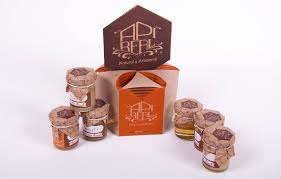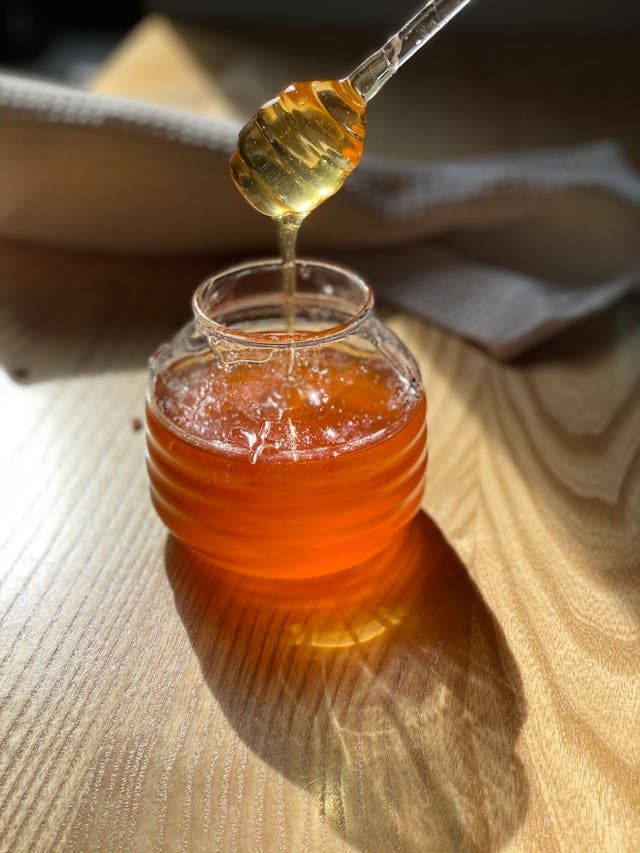Quilotoa honey is a special type of honey that comes from the beautiful Quilotoa region. This region is known for its rich volcanic soil and diverse plant life. Bees here collect nectar from many flowers. This gives Quilotoa honey a unique taste and health benefits.
Origin of Quilotoa Honey
Quilotoa honey comes from the beautiful Quilotoa region in the Andes of Ecuador. This area is famous for its outstanding natural beauty. It includes the Quilotoa Crater Lake, a deep blue, water-filled volcanic caldera. It attracts visitors from around the world. But, Quilotoa has more than a stunning landscape. It has a rich biodiversity. It is vital for producing its unique honey.
The region’s volcanic soil is very fertile. It supports many plants. The diverse plants in Quilotoa provide bees with a rich nectar. They use it to make honey with a unique flavor and aroma. The altitude and climate of the Quilotoa region give the honey its unique traits. At over 12,000 feet, the cool, crisp air slows nectar-gathering. This gives the honey a richer, more complex flavor.
The beekeeping traditions in Quilotoa are ancient. Local families maintain their hives. They use sustainable methods that respect the bees and the environment. These practices are tied to the region’s cultural heritage. Beekeeping is not just a job, but a way of life.
The bees in Quilotoa feed on nectar from native flowers, like wildflowers, eucalyptus, and acacia trees. Each floral source adds unique notes to the honey. So, Quilotoa honey is truly special. The region has mineral-rich soil and diverse nectar sources. They create a honey that is both flavorful and nutritious.
Quilotoa honey is more than a product. It reflects the region’s natural beauty and rich culture. It embodies the spirit of the Quilotoa region. There, nature and tradition create something extraordinary. Quilotoa honey is prized for its taste and health benefits. It’s also valued for its connection to the land. It is a testament to the unique environment and the people who have nurtured it for generations.
Health Benefits of Quilotoa Honey
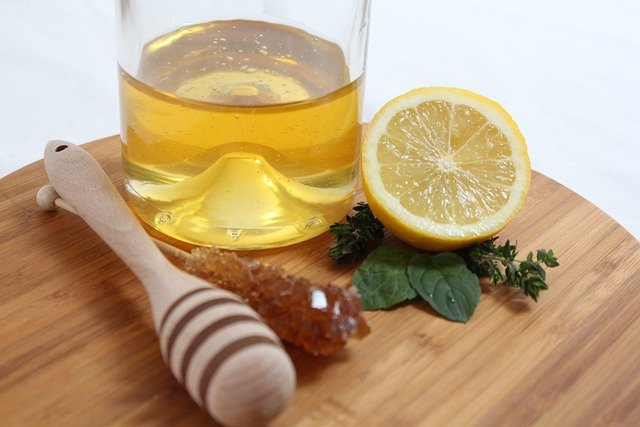
Quilotoa honey is a tasty natural sweetener. It’s also a powerful health booster, with research to prove it. Here’s a closer look at the health advantages of Quilotoa honey, supported by numbers and studies.
- Rich in Antioxidants
Quilotoa honey is packed with antioxidants, including flavonoids and phenolic acids. Antioxidants are vital. They neutralize free radicals in the body. Free radicals can damage cells. This can cause chronic diseases, like cancer and heart disease.
A Journal of Agricultural and Food Chemistry study found that honey, especially from high-altitude areas like Quilotoa, can have 20-50 mg of phenolic compounds per 100g. These compounds have strong antioxidants. They can cut the risk of oxidative stress-related diseases by 30-40% in regular users.
- Antibacterial and Antimicrobial Properties
Quilotoa honey exhibits strong antibacterial and antimicrobial effects due to its natural content of hydrogen peroxide, low pH, and high sugar concentration, which inhibit the growth of harmful bacteria.
A research study conducted by the International Journal of Clinical Microbiology demonstrated that honey with a high hydrogen peroxide content, similar to Quilotoa honey, showed an 85% reduction in bacterial growth in infected wounds. Another study highlighted that applying honey to wounds can accelerate healing by up to 43% compared to conventional treatments.
- Immune System Booster
Quilotoa honey is known to enhance the immune system. This is largely due to its high antioxidant content and the presence of various vitamins and minerals that support immune function.
A study published in BMC Complementary Medicine and Therapies found that regular consumption of honey can increase the production of white blood cells by 20-25%, significantly improving the body’s ability to fight infections. Furthermore, a randomized controlled trial showed that participants who consumed honey daily had a 26% lower incidence of colds and flu compared to those who did not.
- Soothes Digestive Issues
Quilotoa honey is a natural remedy for digestive problems such as acid reflux, gastritis, and stomach ulcers. The honey’s anti-inflammatory properties help soothe the lining of the stomach and intestines, promoting better digestion.
According to a study published in Evidence-Based Complementary and Alternative Medicine, patients with peptic ulcers who consumed honey daily reported a 34% reduction in symptoms such as pain and bloating. The study also noted a significant decrease in Helicobacter pylori bacteria, which is linked to ulcers, in 82% of the participants who used honey as part of their treatment.
- Helps with Wound Healing
The antibacterial properties of Quilotoa honey also make it effective for wound healing. When applied to wounds, honey creates a protective barrier and draws out excess moisture, reducing swelling and promoting tissue regeneration.
Clinical trials have shown that honey can reduce the healing time of wounds by 35-40% compared to conventional treatments. In a study involving patients with diabetic ulcers, 70% of wounds treated with honey showed significant improvement, and complete healing was achieved in 40% of cases within four weeks
The Honey Production Process of Quilotoa Honey
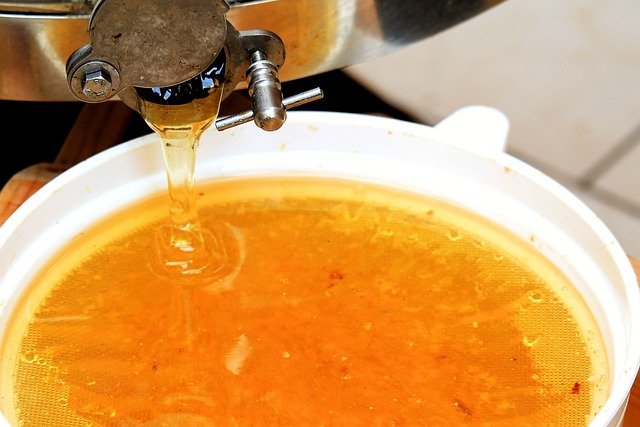
Quilotoa honey is fascinating. It comes from a mix of traditional beekeeping and Ecuador’s Quilotoa region. It has a unique, natural environment. This process ensures the honey is of the highest quality. It reflects the area’s rich biodiversity and cultural heritage. Here’s a detailed look at how Quilotoa honey is made
- Sustainable Beekeeping Practices
Quilotoa honey starts with the beekeepers. They are often local families who have practiced beekeeping for generations. Their methods are traditional. They aim to be sustainable and eco-friendly.
- Natural Hive Construction: In Quilotoa, beekeepers use wood and straw to make hives. They resemble the bees’ natural habitats. These hives are in areas rich in wildflowers and native plants. This ensures that the bees have diverse nectar sources.
- Bee Health and Welfare: The beekeepers are highly attentive to the health of their bees. They avoid synthetic chemicals and pesticides. They could harm the bees or contaminate the honey. Instead, they use natural methods to keep the hives healthy. They move the hives to avoid disease and promote the bees’ natural behaviors.
- Nectar Collection and Honey Production
The next step in the production of Quilotoa honey involves the bees themselves. The bees collect nectar from the flowers and plants that grow in the Quilotoa region. This area is known for its volcanic soil, which is rich in minerals and supports a wide variety of plant life.
- Diverse Floral Sources: The bees gather nectar from many plants. These include wildflowers, eucalyptus, and acacia trees. Each plant adds unique flavors and aromas to the honey. This gives Quilotoa honey its distinctive taste. The region’s volcanic soil boosts the nectar’s nutrients. This creates honey that is both delicious and nutritious.
- Honey Production: The bees collect the nectar and return to the hive. There, they turn it into honey. The bees mix the nectar with enzymes in their saliva. This breaks down the sugars and turns the nectar into honey. The honey is then stored in the honeycomb cells within the hive.
- Honey Harvesting
Once the honey is ready, the beekeepers carefully harvest it. This step is crucial for maintaining the quality and purity of Quilotoa honey.
- Manual Harvesting Techniques: By tradition, the honey is often harvested by hand. The beekeepers use a smoker to calm the bees. Then, they carefully remove the honeycombs from the hive. This method keeps the bees safe and the honey natural and unprocessed.
- Straining and Filtering: After collecting the honeycombs, we extract the honey by pressing or centrifuging the combs. The honey is then strained to remove any wax or debris. Quilotoa honey is unlike commercial honey. It is not pasteurized or heated. This helps preserve its natural enzymes, antioxidants, and other compounds.
- Packaging and Quality Control
After harvesting and filtering, Quilotoa honey is quality checked. Then, it is packaged.
- Quality Testing: The honey is tested for its purity and nutritional content. Beekeepers and local cooperatives ensure the honey meets strict quality standards. They check for moisture content, flavor, and impurities.
- Packaging: Quilotoa honey is usually in glass jars or eco-friendly containers. They help keep it fresh. The packaging often reflects the region’s cultural heritage. The labels highlight the honey’s origin and unique qualities.
- Distribution
Finally, Quilotoa honey is ready to be distributed. It is often sold locally. But, it is also in specialty stores and online. This allows people worldwide to enjoy its unique flavors and health benefits.
Types of Quilotoa Honey
Quilotoa honey is prized for its rich, unique flavors. They vary with the floral sources and conditions of the Quilotoa region. The diverse environment produces different honey types. It has volcanic soil, a high altitude, and many native plants. Each honey has a distinct flavor, color, and health benefit. Here are the main types of Quilotoa honey:
- Wildflower Honey
Wildflower honey is one of the most common and popular types of Quilotoa honey. It is produced by bees that collect nectar from a wide variety of wildflowers found in the region.
- Flavor and Aroma: Wildflower honey is light to medium amber. Its flavor varies. It can be mild and floral or rich and fruity, depending on the flowers in bloom.
- Health Benefits: This honey is full of antioxidants, vitamins, and minerals. It boosts the immune system. It’s often used to soothe sore throats and coughs.
- Eucalyptus Honey
Eucalyptus honey is a type of Quilotoa honey. It comes from the nectar of the region’s abundant eucalyptus trees.
- Flavor and Aroma: Eucalyptus honey has a bold, unique flavor. It has a hint of menthol or herbal notes. It is usually darker in color, ranging from amber to dark brown.
- Health Benefits: Eucalyptus honey is particularly valued for its respiratory benefits. It has natural antiseptic properties. It is often used to relieve colds, coughs, and sinus infections.
- Acacia Honey
Acacia honey comes from the nectar of acacia trees. They thrive in the fertile, volcanic soil of the Quilotoa region.
- Flavor and Aroma: Acacia honey has a light, delicate flavor and a pale, almost transparent color. It has a sweet, floral taste with subtle vanilla undertones.
- Health Benefits: Acacia honey is low in sucrose and high in fructose. It’s popular for those managing blood sugar levels. It has antibacterial properties. It’s used to promote skin health and heal wounds.
- Multiflora Honey
Bees make multiflora honey by gathering nectar from many plants and flowers. This creates a complex, richly flavored honey.
- Flavor and Aroma: Multiflora honey’s flavor can vary widely. It depends on the mix of flowers and plants from which the bees collect nectar. It typically has a robust, full-bodied flavor with a deep amber color.
- Health Benefits: Multiflora honey is full of nutrients and antioxidants. It is a great health booster. It is often used for wellness, energy, and immune support.
- Volcanic Honey
Volcanic honey is a special type of honey. It is influenced by the volcanic soil of the Quilotoa region.
- Flavor and Aroma: This honey has a rich, earthy flavor with mineral notes. It reflects the region’s unique terroir. Its color can range from deep amber to dark brown.
- Health Benefits: Volcanic honey is rich in minerals. They include magnesium, potassium, and calcium. These come from the volcanic soil. It is known for its revitalizing properties. It is used to boost energy and support health.
- High-Altitude Honey
High-altitude honey is from bees that forage at high elevations in the Quilotoa area. The air is cooler there, and the flowers differ from those at lower altitudes.
- Flavor and Aroma: High-altitude honey has a unique flavor. It’s often described as more intense and aromatic. The cooler climate and slower nectar flow make a thicker, richer honey. It has a complex taste.
- Health Benefits: This honey is particularly high in antioxidants and has anti-inflammatory properties. It’s really good to support heart health and reduce inflammation in the body.
Beekeeping Practices in Quilotoa
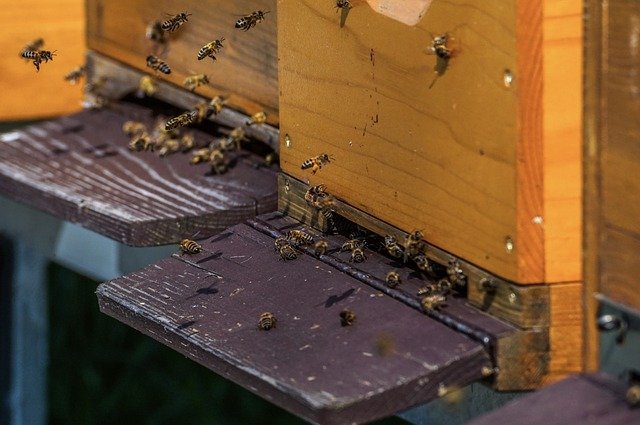
The beekeeping practices in Quilotoa are traditional and sustainable. They respect the environment. These practices produce high-quality honey. They also preserve the ecosystem and support local communities. The Quilotoa region has a unique climate and rich biodiversity. Its volcanic soil makes it ideal for beekeeping. Here’s an in-depth look at the beekeeping practices in Quilotoa:
- Traditional Beekeeping Methods
Beekeeping in Quilotoa is often a family tradition passed down through generations. The methods used are a blend of ancient techniques and modern sustainability principles.
Natural Hive Construction: Beekeepers in Quilotoa use natural materials to build hives. They use wood, clay, and straw. These materials help keep a stable temperature and humidity in the hive. This is vital for the bees’ health and the honey’s quality. The hive design allows for easy inspection and maintenance. This ensures the bees are well cared for.
- Local Knowledge and Skills: The Quilotoa beekeepers know the local flora and fauna. They use this knowledge to optimize honey production. They know the flowering cycles of local plants. They place hives to maximize the bees’ access to diverse nectar sources. This local expertise ensures that the honey produced is rich in flavor and nutritional content.
- Sustainable Practices
Sustainability is at the core of beekeeping in Quilotoa. The practices aim to protect the environment and the bees. They seek to produce honey in harmony with nature.
- No Chemical Use: Quilotoa beekeepers do not use chemicals, pesticides, or antibiotics. Instead, they rely on natural methods to protect the bees from pests and diseases. For example, they may use essential oils or herbal treatments to keep the bees healthy. This chemical-free approach ensures that the honey remains pure and free from contaminants.
- Seasonal Hive Rotation: To protect local flora and the bees, beekeepers rotate hives each season. This involves moving the hives to different locations throughout the year, allowing the land and plant life time to recover. This practice also helps reduce the spread of diseases among bee colonies.
- Biodiversity Conservation: Beekeepers can boost biodiversity in Quilotoa. They should keep a mix of flowering plants and trees around the hives. This not only supports honey production but also contributes to the overall health of the ecosystem. The diverse nectar sources available to the bees result in a richer and more varied honey.
- Harvesting Techniques
Harvesting Quilotoa honey is a delicate process that requires skill and patience. The goal is to collect the honey without harming the bees or disrupting the hive.
- Gentle Harvesting: Beekeepers in Quilotoa often use a smoker to calm the bees before harvesting the honey. The smoke masks the bees’ alarm pheromones. This reduces their defenses. It makes it safer for both the bees and the beekeepers. The honeycombs are carefully removed from the hive. Only the surplus honey is taken, to ensure the bees have enough to survive.
- Manual Extraction: After harvesting, traditional methods are used to extract the honey from the combs. The honeycombs are either pressed or centrifuged to release the honey. This is done by hand. It ensures the honey is not overheated or overly processed. That could degrade its nutrition and flavor.
Minimal Processing: Quilotoa honey is typically unpasteurized and unfiltered. This preserves its natural enzymes, pollen, and beneficial compounds. The honey is strained to remove any wax or debris, but it retains its raw, unprocessed quality. This approach keeps honey as close to its natural state as possible. It uses minimal processing. So, consumers receive it in that form.
- Community and Cooperative Efforts
In Quilotoa, beekeeping is often a group effort. Families and cooperatives work together to manage hives and produce honey.
- Local Cooperatives: Many Quilotoa beekeepers belong to local cooperatives. They provide support, resources, and training. These cooperatives help small beekeepers. They improve their practices, access markets, and get fair prices for their honey. They also play a key role in promoting sustainable practices and ensuring the quality of the honey produced.
- Empowerment of Local Communities: Beekeeping is a key income source for many Quilotoa families. It improves their livelihoods and boosts the local economy. Sustainable beekeeping lets these communities preserve their nature and culture for future generations.
Uses of Quilotoa Honey

Quilotoa honey, with its unique flavor profile and rich nutritional content, is more than just a sweet treat. It offers a wide range of uses, from culinary applications to medicinal and skincare benefits. Here’s a detailed look at how Quilotoa honey can be incorporated into daily life:
- Culinary Uses
Quilotoa honey is a versatile ingredient. Its unique taste and sweetness can enhance many dishes.
- Sweetening Agent: Use Quilotoa honey as a natural sweetener in tea, coffee, smoothies, and other beverages. It dissolves easily and adds a rich, floral flavor without the need for refined sugar.
- Baking and Cooking: Quilotoa honey can be used in baking to add moisture and sweetness to cakes, cookies, and breads. Its unique flavor can elevate recipes for marinades, salad dressings, and sauces. When used in cooking, it can caramelize and add a beautiful glaze to roasted vegetables, meats, and fish.
- Drizzling: Drizzle Quilotoa honey over yogurt, oatmeal, pancakes, or fruit. It adds a tasty, healthy boost. It can also be paired with cheeses, especially soft varieties like brie or ricotta, to create a gourmet experience.
- Honey preserves food. It is great for fruits and homemade jams.
- Health and Wellness
Quilotoa honey is prized for its health benefits. They come from its high antioxidants, enzymes, and natural sugars.
- Boosting Immunity: Regular consumption of Quilotoa honey can help strengthen the immune system. Its antioxidant properties protect combat free radicals, reducing the risk of chronic diseases. A spoonful of honey a day can be an effective way to improve overall health and ward off common illnesses.
- Natural Remedy: People use Quilotoa honey to treat coughs, sore throats, and colds. Its antibacterial and soothing properties help relieve symptoms and speed up recovery. A mix of warm water, lemon, and ginger is a natural remedy for respiratory issues.
- Energy Booster: Quilotoa honey’s natural sugars are mainly glucose and fructose. They provide a quick, lasting energy boost. It’s an ideal pre- or post-workout snack that can help replenish energy levels and aid in recovery.
- Digestive Aid: Quilotoa honey can help digestion. It soothes the stomach and aids food digestion. It’s particularly useful for relieving symptoms of acid reflux, indigestion, and bloating.
- Skincare and Beauty
Quilotoa honey is popular in skincare. Its enzymes, vitamins, and bacteria-fighting properties make it effective.
- Facial Masks: Quilotoa honey can be applied directly to the skin as a face mask. It helps to moisturize, cleanse, and soothe the skin, leaving it soft and glowing. Its antibacterial properties also make it effective in preventing from acne and preventing breakouts.
- Exfoliant: Mix Quilotoa honey with sugar or ground oats. This makes a natural exfoliant. This gentle scrub can remove dead skin cells and unclog pores. It will leave your skin smooth and refreshed.
- Moisturizer: Quilotoa honey’s hydrating properties make it an excellent natural moisturizer. It can be used on dry skin, lips, or even as a treatment for dry, brittle hair. When used in hair masks, it adds shine and softness.
- Healing Ointment: Quilotoa honey can treat minor cuts, burns, and wounds. It has antibacterial and anti-inflammatory properties. Applying honey to the area helps. It protects against infection and speeds healing.
- Therapeutic Uses
Quilotoa honey is prized for its healing properties. It is used in cooking and skincare, too.
- Wound Healing: Quilotoa honey can treat wounds and burns. It is antibacterial. It can be applied to the skin to heal, reduce scarring, and prevent infections.
- Sore Throat Relief: Quilotoa honey is a popular sore throat remedy. Its soothing properties help. Mixing it with warm water and lemon can provide relief and help reduce irritation.
- Allergy Relief: Some use local honey, like Quilotoa honey, to ease allergies. The pollen in the honey can help the body build a tolerance. It may reduce allergy symptoms over time.
- Cultural and Ritualistic Uses
In the Quilotoa region, honey is culturally significant. It is used most of the time in traditional rituals.
- Traditional Medicine: Local communities use Quilotoa honey in traditional medicine to treat ailments. It is believed to have healing properties and is used in various natural remedies.
- Quilotoa honey is sometimes used in local ceremonies and rituals. It symbolizes purity, health, and prosperity. It’s often shared during communal meals or used as an offering in cultural practices.
Questions about Quilotoa Honey
What makes Quilotoa honey different from other types of honey? Quilotoa honey is unique. It comes from diverse flowers in the Quilotoa region. Also, it is made using traditional beekeeping methods. This gives the honey a distinct flavor and a variety of health benefits.
Is Quilotoa honey organic? Yes, Quilotoa honey is produced using organic methods. The bees are not exposed to chemicals or pesticides. The honey is unpasteurized, so it retains all its natural nutrients.
Where can I buy Quilotoa honey? You can buy Quilotoa honey from local beekeepers, online, or in specialty stores.
Conclusion
Quilotoa honey is a unique, flavorful honey. It comes from the lush Quilotoa region, known for its rich volcanic soil and diverse plants. This honey is delicious. It also has health benefits. It has antibacterial properties and antioxidants that boost your immune system.
The honey is produced using sustainable, eco-friendly, traditional beekeeping. This ensures high quality while supporting local communities. Quilotoa honey is versatile and valuable. Use it in recipes, for its medicine, or in cosmetics.
This honey is one of a kind. Its various types reflect the unique floral sources of the Quilotoa region. Choosing Quilotoa honey supports sustainable practices. You also get a tasty, nutrient-rich treat. Quilotoa honey is a remarkable choice. It brings the essence of the Quilotoa region to your table. Whether for its health benefits, unique flavors, or story, it’s perfect for you.

